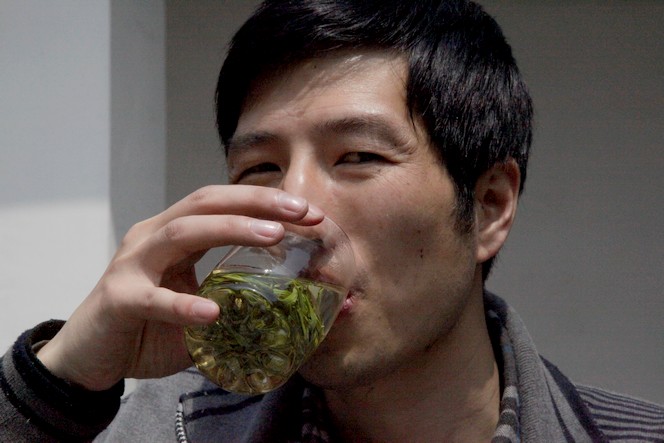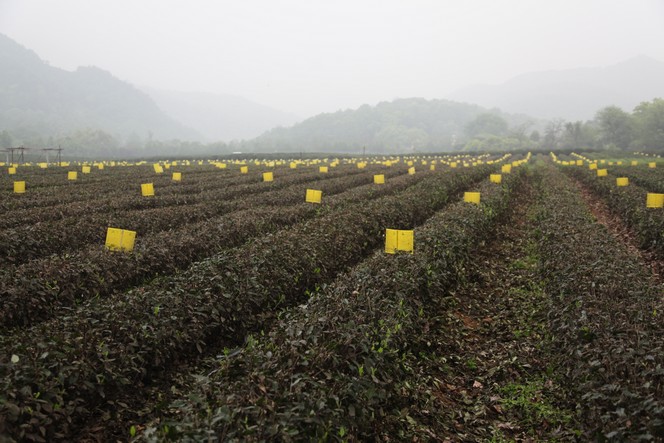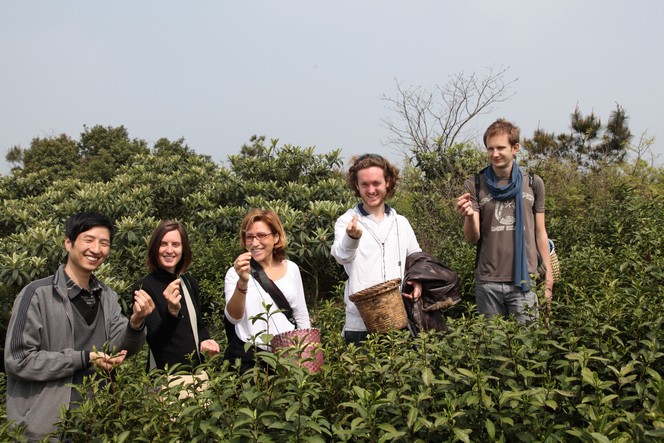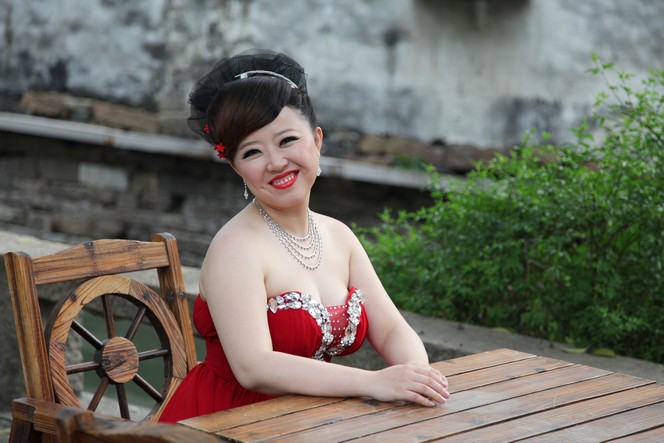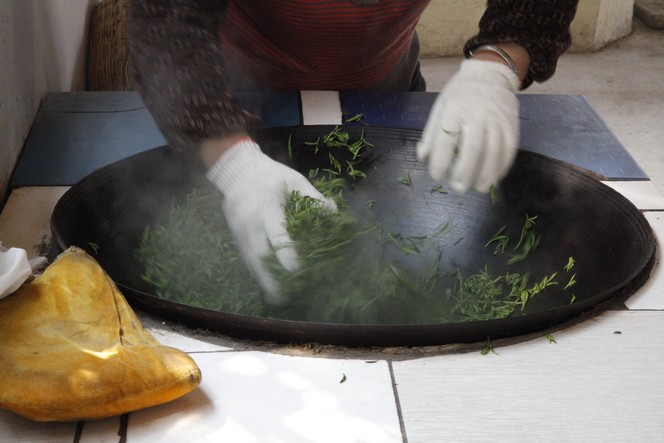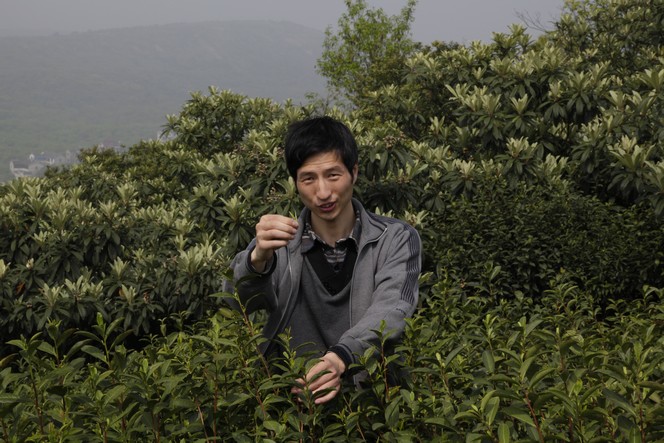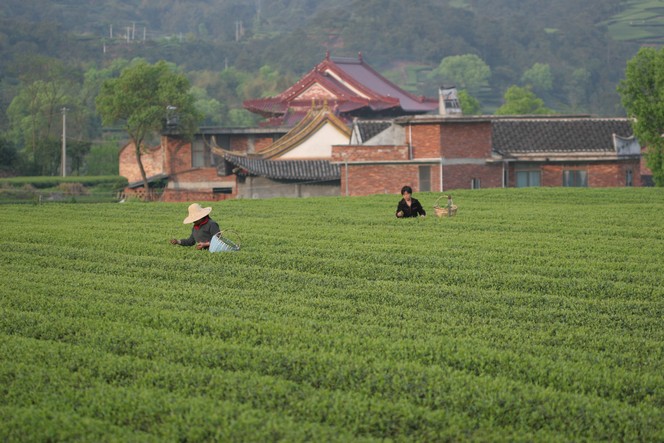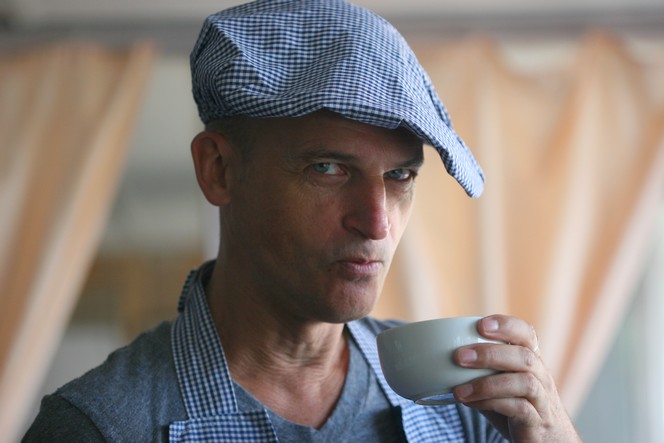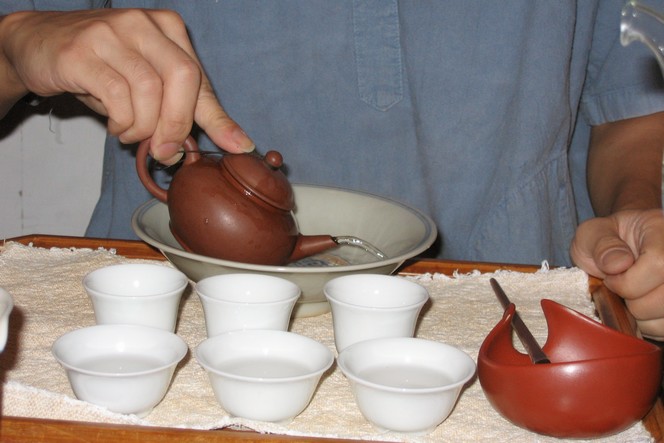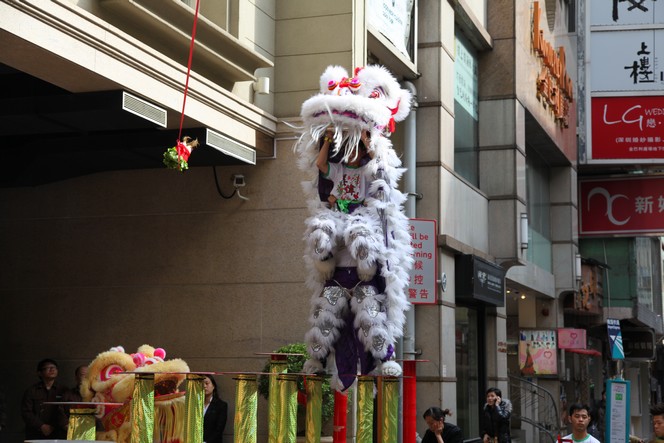In China, tea is often infused directly in the glass. As you drink your “cha”, your host tops it up with hot water. To stop the leaves going in your mouth, you bring your teeth together, which doesn’t prevent you from smiling at the same time.
China
Panels for trapping harmful insects
On the tea plantations there are plenty of ideas for trapping harmful insects. For example, here in Hangzhou, they place little panels covered in glue everywhere among the tea plants. The fluorescent yellow of the boards attracts the insects, but most of all it is the pheromones in which they are coated that appeals so much to bugs.
These are clearly unrelated to all the election boards that are flourishing, right up until this weekend, all around our voting stations.
On the tea routes with my colleagues
Most of the time I travel the tea routes alone, but I also really enjoy sharing with my colleagues the pleasure of walking among the tea plants and observing all the stages of the processing. These trips are very rewarding because we can spend time together talking about our shared passion, understanding, learning, tasting all sorts of teas, and discussing them endlessly. Here, on the right of Waterqian, who produces Bi Luo Chun, and in the middle of his tea garden, are Aurélie, Carine, Cyrille and Mathias. I took this photo last week.
Newly wed Chinese couples love going to Suzhou
The city of Suzhou is full of character. Many Chinese tourists come here to find some old-world charm. In the historic part of the city, canals run alongside the narrow streets, and many newly wed Chinese couples come here to make pictures. In fact you cannot walk more than a few paces before coming across a pair of young newlyweds posing under the watchful eye of the professional photographers, who are eager to capture their models in the right pose. This pretty bride exudes happiness as she smiles for the cameras.
My niece Aurélie launched Le Palais des Thés US
Twenty-five years ago I created Le Palais des Thés to turn my passion into a job, and to share with other enthusiasts the pleasures of tasting the world’s best teas. Since she was little, my niece Aurélie has always seen me with a cup of tea in my hand and has listened to my stories of distant travels to the plantations of China and Japan. A year ago, Aurélie, who has grown up to be a great connoisseur of tea herself, decided to start an exciting new venture and a fantastic challenge. Accompanied by Cy, her husband, she has decided to move to the United States and write a new chapter in this family story, by launching Le Palais des Thés in North America.
I am hugely proud of my niece and I know she will succeed – I have seen how passionate she and her husband are. They have a pioneering spirit.
Bi Luo Chun: one of the rarest China teas
Bi Luo Chun is one of the rarest and most prestigious China teas. Here, my friend Waterqian – one of the few farmers to produce the highest quality Bi Luo Chun – is showing me how much must be taken off the stem during the harvest: a small bud with just one leaf. This type of plucking is extremely rare. It explains the very high price of this tea, whose name means “Spiral of Spring Jade”. In one day, each worker only harvests around two kilos of fresh leaves which, after processing, will produce just two hundred grams of tea.
Mid-April, my attention turns to China
Every year, in mid-April, my attention turns to China. This is the time when production starts of the magnificent China green teas such as Long Jing, Bi Luo Chun and Bai Mao Hou. Right now I’m not far from Suzhou, on the shores of Lake Taihu.
Every day I do my best to sleep in the middle of the tea fields. And this is the kind of view I get when I wake up.
I taste about 50 teas a day
This March I’ve tasted about 50 samples of tea a day. The first flush Darjeelings launch the season, followed swiftly by the Nepalese teas. A little later it’s the turn of the new-season China green teas. Then the Japanese Ichibancha. The teas are tasted blind, of course. The ritual is always the same: having smelt the infusion, you suck in the liquor and swish it around your mouth. You analyse the texture, the flavours, the aroma groups. You take your time. You taste and you taste again. You have to concentrate… Except for when a photographer bursts into the tasting room and captures the moment.
Preparing tea according to the Gong Fu method
In Taiwan and in some regions of China, tea is prepared according to the Gong Fu method. This requires a very small teapot, smelling cups, tasting cups and a tea boat, a hollow vessel into which you pour the water used to rinse the tea and the cups.
The Gong Fu method consists of infusing the same tea leaves repeatedly for just a few seconds at a time. Each infusion, known as “water”, releases new aromas, until there are no more.
This method is particularly appropriate for the preparation of certain Wu Long or Pu Er teas. On Sunday I tasted a 2008 Pu Er Xiao using this method: it was a real treat.
The lion’s dance in the Chinese New Year festivities
I’ve witnessed a curious spectacle in the streets of Hong Kong on many occasions in recent days. A large, peculiar-looking animal performs all sorts of contortions and dances, surrounded by percussionists playing the cymbals and other instruments. Then it rises up on its hind legs and stands very tall, to the roar of the drums which gains in intensity to increase the air of excitement. It then gulps down a bunch of vegetables hanging high in the air, before spitting out the leaves a few moments later.
The lion’s dance is part of the Chinese New Year festivities. In Hong Kong, no shop or hotel misses out on a visit from this strange creature. Inside the beast are two Gong-Fu experts, and this exercise demands great skill.

